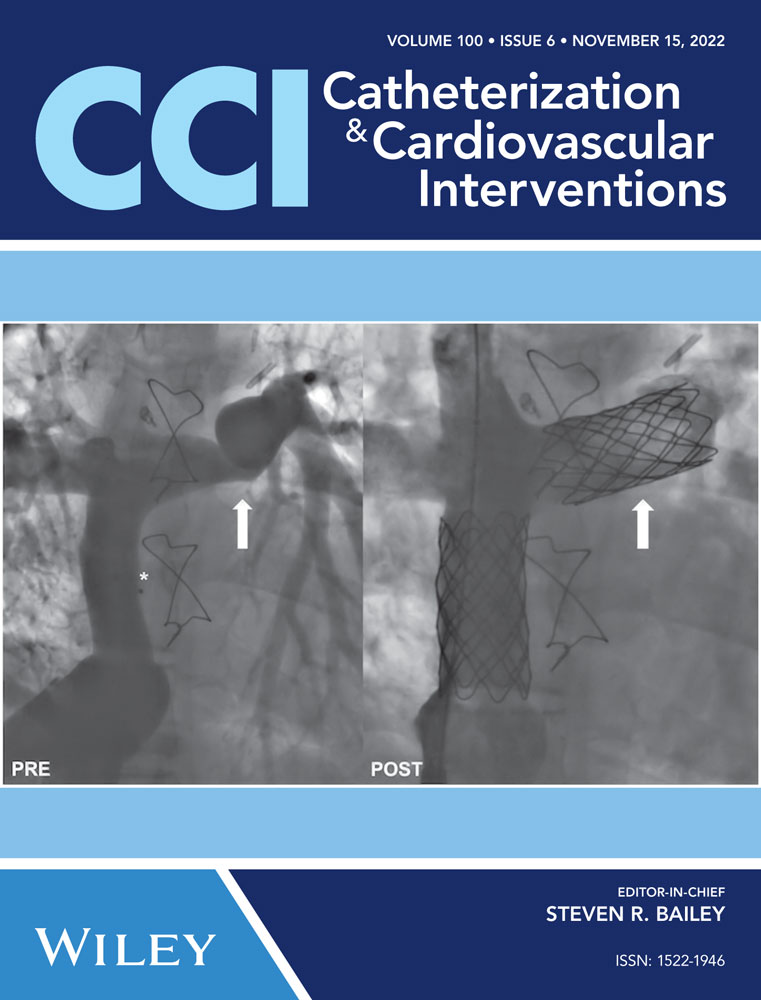Feasibility of facilitated antegrade dissection with Stingray-based re-entry for coronary chronic total occlusions with previously stented graft-to-native-vessel anastomoses
Abstract
Facilitated antegrade dissection re-entry (F-ADR) is a technique described for treating post coronary artery bypass surgery chronic total occlusions (CTO) when there is flush occlusion of the distal cap of the CTO at the vein graft anastomosis. In this scenario retrograde access is usually impossible and if antegrade wiring fails, F-ADR is then the best option. Following antegrade dissection past the anastomosis, a balloon is delivered via the vein graft and inflated in the native vessel distal to the anastomosis to facilitate re-entry using a Stingray catheter. However, the applicability and outcome of this technique have not been described in cases where the graft to native vessel anastomosis has previously been stented. We report a case series of successful CTO recanalization using F-ADR across stented graft-native vessel anastomoses.
CONFLICT OF INTEREST
The authors declare no conflict of interest.
Open Research
DATA AVAILABILITY STATEMENT
Data sharing is not applicable to this article as no new data were created or analyzed in this study.




